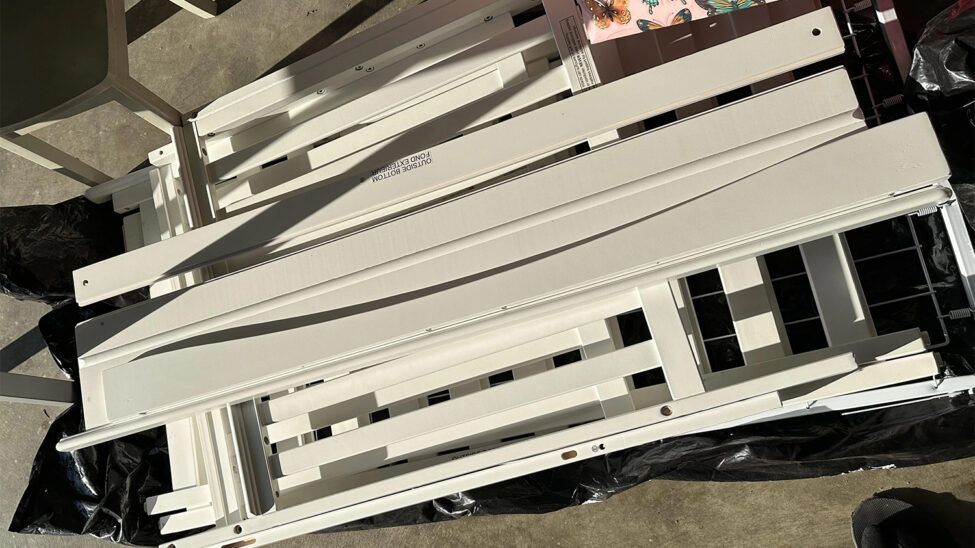
It’s Just Storage — or Is It?
The first time I took down a crib, I thought: “How hard can this be?” Wipe it, disassemble it, and stash it somewhere. But a year later, when we brought it back out for our second baby, I was greeted by rust on two screws, a warped baseboard, and a mystery stain that hadn’t been there before. Lesson learned.
Storing a crib isn’t just about saving space. It’s about protecting something that once held your baby every night. That’s not sentimental fluff — it’s about safety. A poorly stored crib can mean missing bolts, cracked joints, mold in hidden places. And the worst part? You often won’t notice until you need it again.
A crib isn’t a box you tuck away — it’s a future sleeping place for someone tiny and trusting.
Clean First, and Not Just the Obvious
Once you’ve decided it’s time to put the crib away, take a deep breath and give yourself a day for it. Yes, a whole day. Because it’s not just dusting.
First, take everything off — the mattress, bumper (if you used one), toys, all of it. Use a gentle, baby-safe cleaner (a mix of vinegar and warm water works wonders) to wipe down every surface. Pay attention to the base slats and inner corners where crumbs and fluff like to hide.
Let it dry completely. Not “it feels dry” — I mean really dry. Moisture is the fastest way to welcome mildew and warping. I usually leave parts in a sunny room for 24 hours, turning them occasionally.
If you skip the drying part, you might open that storage box to a moldy surprise.
Take It Apart Like You’ll Need It Again (Because You Will)
You don’t need an engineering degree, but you do need a system. Before you unscrew anything, take photos from all angles. Trust me, the “I’ll remember” plan has failed every parent I know. Label parts — a little masking tape and a pen go a long way.
Store all the bolts, screws, and odd-shaped bits in a sealed plastic bag, and tape that to one of the panels. If you have an instruction manual, tuck it inside too. No manual? Print one from the manufacturer’s website and save it.
Future you will thank current you for not throwing all the screws into a drawer labeled “misc.”
Where You Store It Matters (a Lot)
Avoid basements, garages, or attics unless they’re dry and temperature-controlled. Extreme heat can warp wood, and cold can make metal parts brittle. Ideally, you want a spot that’s clean, dry, and out of reach of curious toddlers.
In my case, we cleared out a spot under the guest room bed and used a mattress bag to wrap the biggest panels. For smaller homes, vertical storage in closets can work if you place felt pads between pieces to prevent scratching.
- Use breathable covers, not plastic wrap
- Keep away from windows or direct sunlight
- Check every few months for signs of moisture or pests
A crib that sleeps in peace is one that wakes up in one piece.
Bringing It Back to Life
When it’s time to bring the crib back, don’t rush it. Even if the baby’s coming next week, give yourself a little buffer. Take everything out, inspect for damage or missing parts, and wipe it down again.
Check the joints and fasteners. If anything feels loose or wobbly, don’t just “tighten it a bit.” Look for stripped screws, wood fatigue, or signs that the crib may no longer be as solid as it was.
And above all — if something doesn’t seem safe, don’t use it. Even a beloved crib might need to retire eventually. That’s not a failure. That’s parenting with foresight.
What kept one baby safe should do the same for the next. And if it can’t — your job is to notice.
Wrapping Up With Care, Not Tape
There’s a strange comfort in storing a crib. It means a season has passed — and maybe another one is coming. Done right, it’s not just about saving a bed frame. It’s about keeping the door open to the next chapter, without stress, surprise mold, or a box of unidentifiable screws.
For me, our old crib is waiting quietly for our cousin’s baby — clean, solid, and ready. And this time? It’s not covered in mystery stains.


